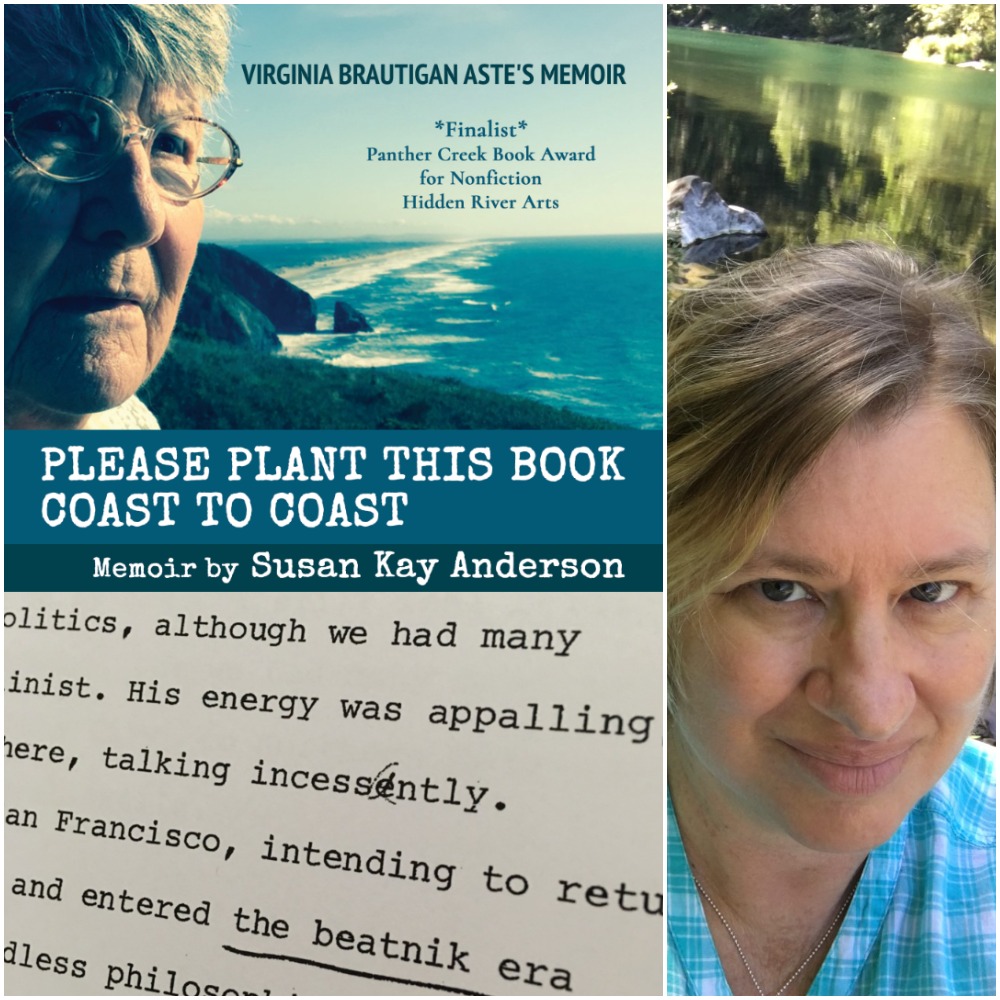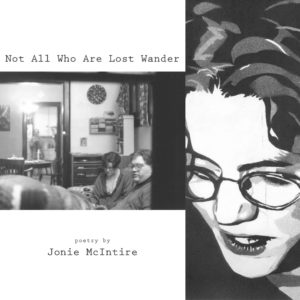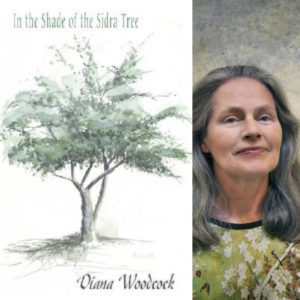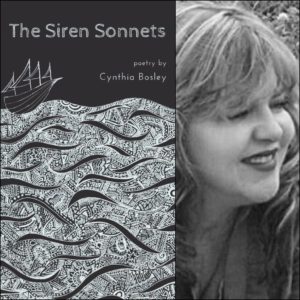In this startling and fascinating book, Susan Kay Anderson takes the reader on a journey from California to Oaxaca to Hawaii, through the life and words of Virginia Brautigan Aste–married to Richard Brautigan for a decade–in a series of interviews that reveal Ms. Aste’s courage, creativity and sheer survival instinct. With original Linoleum cut prints by the author and photographs that bring Ms. Aste to life, this book ‘takes you to places you’ve never been before’. As Ms. Aste says, ‘Everyone wants to feel they had something to add to human consciousness.’ In Please Plant This Book Coast to Coast, Susan Kay Anderson does just that.
–Erica Bodwell, author of Crown of Wild
Just as a patchwork quilt is created by bringing together pieces of cloth with differing patterns, colors and designs, Susan Kay Anderson brings together the story of Virginia Brautigan Aste’s life by incorporating fragments of poetry, biography, memoir – and even academic essays, written by Aste for classes at university. These fragments or pieces, brought together, give us a bird’s eye view of Aste’s life. And not only is this a book about Aste in relation to her poet husband Richard Brautigan, but more importantly, it is about her life as a feminist, intellectual and community activist in her own right. The stories of women who marry and provide all manner of support to a famous (male) poet / painter / writer are, if not silenced, often not heard enough. Susan Kay Anderson has brought one such story to light in Please Plant This Book Coast to Coast. It is a remarkable feat.
–America Hart, author of into the silence: the fishing story
For everyone who has ever wandered under Richard Brautigan’s sidelong shadow, this book offers wise glimpses of a vanished world – fascinating inner secrets, warm life-moments, wildflowers that matter, a pleasant journey among jeeps and limousines “along a bunch of beautiful roads.”
–Roger Echo-Hawk, author of Floating Worlds
Virginia Brautigan Aste’s story is about one woman’s collaboration and contribution to all around her. Susan Kay Anderson’s book is a wonderful montage of Virginia’s many pieces that paste together the retelling of a very giving life.
–Paul Levitt, artist & author of Gathered Reminders: A Visit With Man Ray
A basic Buddhist concept is that of “causes and conditions”: the infinitely-deep network of circumstances and actions which bring each thing into being. To take that down to earth: who would Richard Brautigan have been without Virginia Brautigan Aste? And the same question in reverse, of course. The answer to both is: it’s not possible to know. Two young lives brush against each other between the time of the Red Scare and the late 1960s, then part. Long before that, Ms. Aste is born in Rexburg, Idaho. Long after, she founds a Woman’s Center on the Big Island and, even later, has a skate park named in her honor. Among the treats here are the reprinted poems of Brautigan’s Please Plant This Book. How could any of this have been without the exact happenstances that brought Virginia and Richard together? And allowed Susan Kay Anderson to discover her substitute teacher’s identity? This book reminds us that every backstory is the main story.
–David P. Miller, author of Sprawled Asleep






Susan Kay Anderson –
“An intricate telling of Virginia Brautigan Aste’s unsung story braided with that of Richard Brautigan’s as well as with Susan Kay Anderson’s own narrative. An environmental herstory that upends the known narrative and shows us what’s behind the curtain.”
–Tobi Harper, author of “The TBI Journey”
Seraphin –
This is a beautifully written book. A story of love and overcoming obstacles, a layering of daily life challenges, woven into a beautiful existential journey.
Susan Kay Anderson (verified owner) –
From Hash Journal:
The Wind We Have Sown
Writer Ray Marsocci reviews Susan Kay Anderson’s Please Plant This Book Coast to Coast from Finishing Line Press, 2021
The summer before I turned twenty-one, in 1981, was my last carrying a “rucksack” filled with more books than clothes. That was ‘“Zen” writer’ of me, I thought, as was how I hitchhiked, “traveling” with the wind. I admired the wind’s absence, its presence, its indifference to me. I yearned to go where the wind would go, in all its palimpsest impunity, so long as it was willing that I went along, that I might follow. I hoped the wind would help me “Zen” the stories spiriting through me.
That 1981 summer was Reagan’s first as president, so when the wind went to Galilee and up onto the Block Island ferry, I went on board too, with humbling ‘“Zen” confidence’ the wind wanted me out there, on the Atlantic. I didn’t know a lot then, but trusted Jack Kerouac and the Beats more than anything I read about Ronald Reagan and his America: that the spirit mattered more than the body, and the heart did. I’d read On the Road at least three times, and all of Kerouac’s ‘Pentateuch,’ plus of course Ginsberg’s Howl and Ferlinghetti’s Coney Island. Snyder’s Turtle Island may be what brought me to the ferry, while Burroughs’ Naked Lunch is probably why I hitched aboard that boat to hide on that island. The only book I remember bringing was Kesey’s Sometimes a Great Notion for re-reading, as much for Leland Stamper’s relationship with his big brother Hank as for how the Zen-poet Snyder had, in the Beat canon, wrestled with college-football-playing Kesey, and won: Notion was still helping me redefine my manhood. Kerouac’s The Lonesome Traveler may not have come with me, but I had read it by then, and it had helped me put away my life-’til-then’s childish things. I wasn’t ready to get myself into college yet, but like Kerouac, I’d reached my “Zen” road’s end alone, with Dean Moriarty’s “yes yes yes” still ghosting the wind, driving me, but instead with a blue pen and a black pen in my right hip pocket, and lots of paper upon which to compose, in my teeny, tiny, handwritten score, every note the Atlantic wind blew.
Like Kerouac, yeah, writing the Pacific waves’ words, in his novel Big Sur.
Or, more likely, as Virginia Brautigan Aste reflects in Susan Kay Anderson’s Please Plant This Book Coast to Coast, “it really is a long life”: as Richard Brautigan had told her, her “writing wasn’t any good,” I was told too, by teachers in a series of “adult-ed” workshops I paid to attend; unlike Aste, I did “consider myself a writer,” but as Brautigan had told her she “shouldn’t quit [her] day job,” which “was what was supporting him,” I had already begun a lifetime of working “contract” jobs, which kept me moving, kept me unsettled, yet kept me writing as well, no matter how not-good.
Virginia Brautigan Aste is Richard Brautigan’s widow. She met Susan Kay Anderson in Pahoa, in Hawaii, that much more famous island off the Beats’ more famous California coast. Anderson’s book, Coast to Coast, transcribes the years Aste lived and worked before meeting Brautigan, Beat poet on the movement’s fringe, the what we don’t hear about or learn, the hope and energy we all need to just keep going, keep trying; to seed the trust in a reason needed to keep plotting our person’s character upon our life’s “road,” no matter the “subterranean” setting, and despite its “desolation.”
And of course, too, how Richard Brautigan effected and affected her adult life: Susan Kay Anderson’s title, Please Plant This Book Coast to Coast, extends Richard Brautigan’s collection name, Please Plant This Book, seeding our nation with the liberal hope Brautigan and the Beats worked to impart on that nation then. In the years before the Beats, at a time when “nuclear weapons weren’t a reality,” they seeded a hope that the U.S. could grow by “bringing people together” through folk art, a hope that, by 1968 and Brautigan’s collection’s publication, had produced a plea. Hope was all the “folk” had left. Anderson’s book, with its title’s extension, comes amid Covid’s raging, virulent spread and the slash-and-burn dis-ease of bankrupting conservatism. But whereas Brautigan used his great humor, and the others of the Beat pantheon their great, learnéd wit, that we could, as a nation and so as a world, work together in a kind of “Zen” unity, our stage is become ravaged by pandemic, fiery mistrust and incendiary fear. Unlike with Brautigan’s and much of the Beats’ simple hope we would stop taking ourselves so seriously, ours has become a national impeachment of our world and its institutions, each currently coming as at a revelatory end.
Or, more likely, ‘Revelatory.’ As in the catholic book of Revelations.
Aste seems as if to have found her faith after flunking out of UCLA a second time, in the mid-1950s, before heading east to New York, and to Columbia. With uncited parallels to the Beats’ formative years, the 1950s, Aste recalls how the Communist specter contrived an unseen evil, so she grew to live as her grandmother had, questioning all while working to embrace “sustainability,” in their living defining their conservatism. She cites how that specter went “totally against what” the people she knew “were all about,” that they were all “so pacifistic” that their faith and hope became the “dark side,” so that even someone so mild-mannered as Brautigan could “love guns” and “going shooting.” The gun in itself images its act still as something “dark,” with yet the notion of the sport already shading difference with the “right” borne into our nation’s Constitution.
Brautigan’s “genius,” Aste cites, was “in his writing,” but only “because of his humor.” He was “always checking himself if he passed a mirror,” seeming to want to ensure “he was still there.” His hair mattered to him, Aste remembers, as did his clothes, except “not in a vain way.” Rather, he was almost as if always “thinking he would disappear at any moment,” unable to sustain himself.
Aste says she knew “exactly what and where” Brautigan was “talking about” in his early books, despite how their writing was “ambiguous on purpose.” He did not believe in a god or an afterlife, but in art, and in how art was the “highest” achievement people could attain. These ideas appealed to her: despite her grandmother’s practicality, Aste recognizes “some real disorders” she inherited from her otherwise alcoholic family: just as many people, perhaps especially women, were “approaching” the sixties by way of “intimacy, companionship, love, acceptance,” she acted out through “sexual promiscuity.” Most “everybody,” Aste admits, thought that was okay, and maybe for some people it was. But as her grandmother married a “gentleman,” and Aste seems to have found faith in Brautigan’s poetic wit and humor, her grandmother was left widowed when the man died of the Spanish flu, years ahead of the Dust Bowl and the U.S. economy’s depression, and became almost a “non-person” in her family’s lore, “alcohol shut down” Brautigan’s “spontaneity and depressed him.” Overt reliance on the body, Aste seems to imply, disappears the spirit and one’s heart and so limits the body’s ability to sustain itself.
We have as a nation progressed some since the sixties, even as we fight louder about who we trust and how. We seem to take solace in humor still, except no longer from books or art, but more often from late-night TV, which has become, too, the news we trust most. And while Aste can recall to Anderson she had “no role models,” or “counselors” of any sort, citing the then-ardent, and still-pervasive, idea that women “won’t need … scholarships,” because “they’re going to be getting married,” we remain as a nation seemingly intent on bullying via decibel volume and the wealth we image in every mirror, or lens, that we pass, making believe we are rich.
Perhaps we have progressed in some very great ways, but as Virginia Brautigan Aste survived, in part by moving to an island, Hawaii, she seems to realize it was her spirit, her heart, that brought her to her adopted home. Work is what got her there. The continuing to strive, to learn, even as the world led her to believe those were nothing she needed. It is the same wisdom her grandmother imparted, and while Richard Brautigan helped her shape it, she sounds as if cognizant that the sixties’ overt awareness of the body was not an end in itself, but part of her life’s progression.
The Beats taught me a lot, I admit it, but it wasn’t until getting to that much smaller island, off of that other coast from theirs, where I learned that it was the stopping, and the shaping, that gave one’s work reason. It was finding belief in something, and then working hard to sustain it. I’d hitchhiked the summers before turning nineteen and twenty, thumbing north and south and south and north, from San Francisco, where I was ‘teaching myself to write,’ in that city’s North Beach, at Vesuvius’s, where I had ‘studied’ the Beats by reading their photos exhibited there, as if in a Subterranean museum, where I’d go and not drink after hanging out in City Lights Bookstore. I don’t remember if that is where I first read Richard Brautigan’s name. Where Virginia Brautigan Aste implies for herself that, because she was, simply, a woman, I was already understanding that I would never be a true Beat “angel,” because I was, at best, a Bohemian blowing in a “Zen” wind. It took my moving to Block Island, and living with a ‘roommate’ in a wind-beaten edifice called the “Tin Tent” by its keepers, to begin to understand the “desolation” behind my life’s “dharma.” That ‘roommate’ was a rarely coherent dishwasher at the same seaside restaurant where I made way, way, way too much money in tips as a ‘li’l Buddhist busboy.’ I wasn’t Buddhist, and still ignorant enough, and arrogant enough, and shy enough to call myself “Zen.” I was naïve enough still to believe, too, I could just keep going, never settling.
Yet this roommate, I remember, also read a lot. We did not talk often, and then mostly only to share something that we were reading. I remember him reading Richard Brautigan, because he was one of the few Beats I had not read. He read Frankenstein that summer, I remember only for the rather rampant discussion we got into, about the “monster” we as a nation had created, going on two hundred years after Mary Shelley’s forewarning. I don’t remember any other specific, except for, in part, a Brautigan poem this guy read to me.
The poem’s title was a month spelled out and a numeric day and year.
Everything else on the page was blank. Just white space. Nothing happened.
Okay, that is probably more clever than it was brilliant, but as I finish Susan Kay Anderson’s Please Plant This Book Coast to Coast, I am reminded anew of Brautigan’s book, and see again that, even amid Covid, and the loud and violent conservation of the earth we as a nation have excoriated, it’s in the simple, and in the surrender, in the understated, that we will come to the faith we most need right now, in order to sustain ourselves: a reason to believe in what can be. A need to work so as grow the human nature which we can create, if only we would plant it. I’ve not read the Beats in decades, and will never again, nor will we all wind up in Hawaii, like Virginia Brautigan Aste. But we can come to, and we can ‘sustain,’ a similar kind of heaven.
As March winters ice lions loud enough to make the days its prey, Ray Marsocci continues to work out a headache, hopeful that upon a post-Covid landscape, those same lions will lamb the dissonant, virtual world with warming lyric. With recent essay/reviews appearing in Tinderbox, Ray Marsocci continues to compose fictions, which he has placed in such literary venues as Green Mountains Review, Interim, and Quarterly West, and online at Panoply and Carcinogenic Poetry.